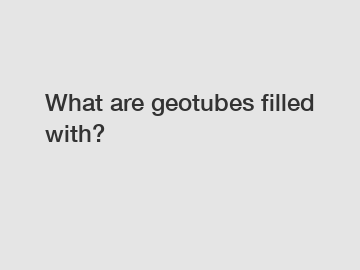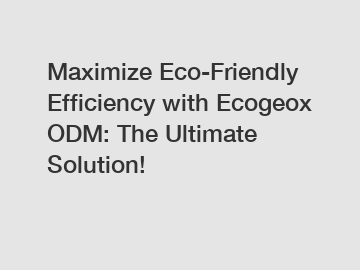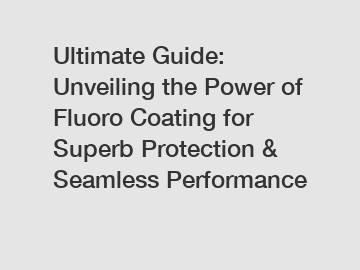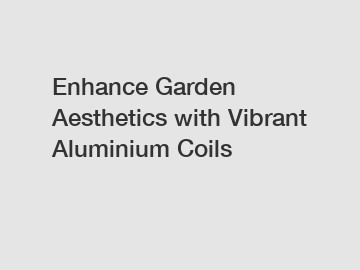What are geotubes filled with?
Have you ever wondered what lies beneath the surface of those large tube-like structures you see on coastlines or construction sites? These fascinating structures, known as geotubes, play a crucial role in various applications, including shoreline protection, land reclamation, and erosion control. In this blog, we will delve into the depths of geotubes to uncover what they are filled with and how they revolutionize environmental engineering. Prepare to be amazed by the science behind these ingeniously designed structures!
Geotubes: A Brief Overview:
Before we reveal the secret hidden within the geotubes, let's understand their purpose and construction. Geotubes are large, flexible containers made from high-strength and eco-friendly materials such as woven polypropylene fabric. These cylindrical structures are usually several meters long and can vary in diameter based on the intended project requirements.

Filled with Innovations:
So, what fills up these remarkable geotubes? Their filling material primarily depends on the application they are intended for. Here are some commonly used granular and slurry materials:
1. Sand:
Sand is one of the most commonly used filling materials in geotubes. This is particularly true when it comes to shoreline protection or beach renourishment projects. High-quality sand is pneumatically conveyed into the geotubes, ensuring a precise and consistent fill. The sand acts as a barrier, absorbing the impact of waves and tides, preventing erosion, and preserving the coastlines.
2. Sediment and Sludge:
Geotubes also find applications in desludging and dewatering projects. For instance, in wastewater treatment plants or industrial settings, geotubes are employed to contain and dewater sludge and sediments. The slurry is pumped into the geotubes, allowing excess water to drain out. Over time, the sediments consolidate, thereby reducing the volume and making it easier for disposal or further treatment.
3. Aggregates:
In certain construction projects, such as land reclamation or shoreline stabilization, geotubes may be filled with aggregates like crushed stone or gravel. This provides stability and structure to the geotubes while offering enhanced erosion protection. Aggregates also allow for the incorporation of vegetation, fostering ecological balance and restoring natural habitats.
4. Geo-synthetic Blends:
For specialized engineering projects, geotubes are sometimes filled with a blend of geo-synthetic materials. These customized blends combine materials like sand, sludge, and specialized additives to achieve unique properties suited to the specific application. For example, in contaminated soil remediation, geotubes filled with geo-synthetic blends can encapsulate the pollutants safely, preventing leaching and protecting the environment.
The Science Behind Geotubes:
Additional reading:Can You Differentiate Between Tempered and Regular Glass? Tips to Avoid Confusion and Accidents!
Which materials provide the best corrosion protection?
Vinyl flooring VS SPC flooring: Which reigns supreme for eco-conscious homeowners?
Which is Superior: Geomembrane or Geotextile for Tailings Storage Facilities?
Which Pre-Painted Aluminium Finish Reflects Your Personality?
Unlocking Success: Mastering the SDP Certificate
How Do You Know If Primer Coat Is Dry?
The true wonder of geotubes lies not only in their fillings but also in their design and engineering. The fabric used to construct geotubes is inherently durable, allowing them to withstand harsh environmental conditions, including UV radiation, saltwater corrosion, and erosion over extended periods. Geotubes are further reinforced with geotextiles and are often pre-sealed, ensuring high-integrity containment of the filling materials.
The Benefits of Geotubes:
The ingenious design and versatile application of geotubes offer a multitude of benefits. Let's explore some key advantages:
1. Cost-effectiveness:
Geotubes are a cost-effective alternative to traditional methods of shoreline protection or land reclamation. Their construction and installation require minimal resources, making them an eco-friendly solution.
2. Versatility:
Due to their flexibility, geotubes can be installed in a wide range of locations and terrains. From coastal areas to riversides, they adapt effortlessly and can be customized to meet project-specific requirements.
3. Environmental Friendliness:
Geotubes play a vital role in preserving natural environments. By minimizing erosion and controlling sedimentation, they support the ecological balance of coastlines and aquatic habitats.
4. Durability and Longevity:
The robust construction of geotubes ensures their extended service life in demanding conditions. They offer exceptional resistance to weathering, corrosion, and abrasion, providing long-term stability and protection.
In Conclusion:
The enigmatic geotubes, hidden beneath layers of high-strength fabric, are truly a marvel of modern engineering. Their filling materials, carefully chosen for specific applications, allow them to tackle environmental challenges head-on. From safeguarding coastlines to managing sludge and sediment, geotubes have become an integral part of environmental conservation and construction projects. Next time you spot these colossal tubes, you'll have a deeper understanding and appreciation for what lies within—filled with innovation, science, and a commitment to preserving our planet.
The company is the world’s best features and applications of geogrid, geosynthetics clay liner exporter, geomembrane for Water conservancy project supplier. We are your one-stop shop for all needs. Our staff are highly-specialized and will help you find the product you need.
Additional reading:Which Innovative Features Make 40ft Container Houses The Ultimate Living Solution?
Is there a way to tell between tempered glass and normal glass?
Which Easy Fit Skirting Board Design Will Blow Your Mind?"As the demand for Easy Fit Skirting Boards rises, discover the cutting-edge designs revolutionizing interior aesthetics.
What is visco elastic tape for pipeline anticorrosion?
Unveiling the Advantages and Challenges of Automatic Sensor Faucets
Which ecogeox geosynthetics contractor offers the best value for money?
Elevate Your Roofing with Gutter Metal Coil
159
0
0
Related Articles
-
Exploring the Durable Elegance of Red Granite Cemetery Benches
Exploring the Durable Elegance of Red Granite Cemetery Benches.
65
0
0
-
Prefab Shipping Container Homes: Trendy, Affordable & Eco-Friendly Solutions
Prefab Shipping Container Homes: Trendy, Affordable & Eco-Friendly Solutions.
76
0
0
-
Which 2 Hole Single Handle Bathroom Faucet Design Maximizes Water Efficiency?
Which 2 Hole Single Handle Bathroom Faucet Design Maximizes Water Efficiency?
56
0
0
-
Maximize Eco-Friendly Efficiency with Ecogeox ODM: The Ultimate Solution!
Maximize Eco-Friendly Efficiency with Ecogeox ODM: The Ultimate Solution!
143
0
0
-
83
0
0
-
How much does 20ft container cost?
When it comes to freight shipping, the cost of a 20ft container is an important factor to consider.
59
0
0
-
61
0
0
-
Which Trendy Designs Add a Personal Touch to Granite Headstones?
Which Trendy Designs Add a Personal Touch to Granite Headstones?
62
0
0










Comments
All Comments (0)